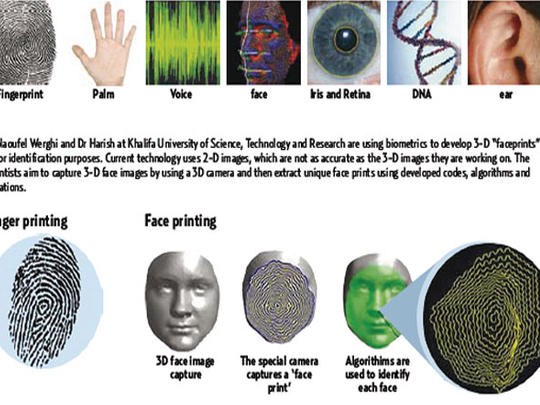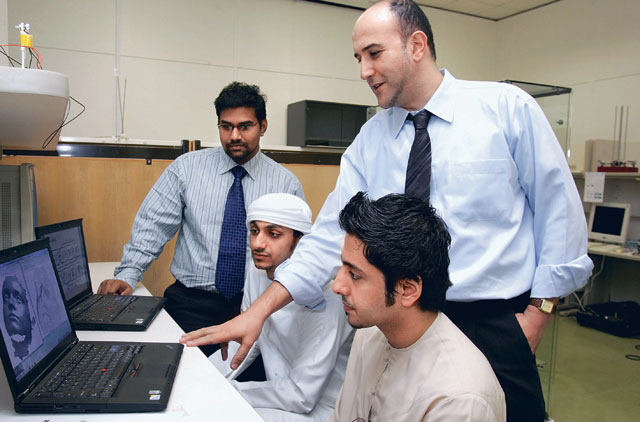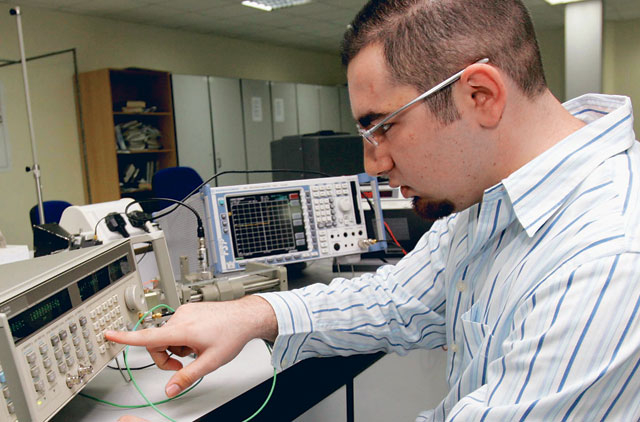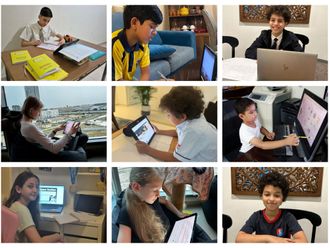
As national security measures tighten up around the world and organisations take steps to protect their interests, more efficient ways are needed to keep borders safe and criminals at bay.
At the Khalifa University of Science, Technology and Research (KUSTAR), scientists are conducting research into biometrics for the purpose of developing 3D faceprints. The project is spearheaded by Dr Naoufel Werghi and Dr Harish Bhaskar, assistant professors at the department of computer engineering, along with two computer engineering students.
Biometrics is the technology used to measure and analyse people's biological traits — which can be physical features or behavioural patterns — used for identification purposes. Their research is for the purpose of developing face recognition systems using 3-D face images.
Awarded a research grant of Dh180,000 from the Emirates Foundation, Werghi and his team are working on methods of developing faceprints formed in patterns similar to those in fingerprints. If successful, the research will be a technological advancement in this field and can potentially be used by security forces and airports to swiftly identify wanted suspects by matching their images to those on official databases.
What's special about 3-D?
"The main motive for our research is that we currently have various fingerprint recognition systems in place in things like laptops. More importantly, in airports across the world you find face recognition systems currently working on 2-D images," said Bhaskar. "While this system is quite accurate it also has a lot of problems," he added.
Werghi explained the main drawbacks of 2-D imaging are first, the illumination. "We can't guarantee images to keep with the same values in regards to lighting and blackness," he said. Posture is the second. "The position of a person could change or their angle could," he added.
Lastly, proximity to the camera is another hindrance in precise matching. "The scale depending on how close the person is to the camera or a combination of any of these three factors pose disadvantages," said Werghi.
"The scope of this project is to investigate the usefulness of 3D geometric shapes to represent and recognise faces and facial expression," he added.
The idea is to capture 3D face images by using a 3D camera and then extract unique faceprints using developed codes, algorithms and equations.
"A 3D picture is made up of a group of small triangles, equivalent to a pixel. All these triangles form the shape of the face," said Werghi. "We discovered that if we first detect the nose tip, from there we can generate rings and extract the frontal face," he added.
The nose's location at the centre of the face is the ideal starting point for extracting a faceprint. It is from the tip of the nose that the equations are applied, to then propagate a unique pattern which forms individual faceprints.
"With respect to the geometry of the face, the nose is the most stable point," said Bhaskar. "With any changed expression the nose doesn't move…so having gotten the nose tip we are now exploring avenues of locating the eyes in respect to the nose and there are different ways of doing it," he added.
"The idea is to prove that each individual face has unique features and no two people with the same faceprint can be found," said Humaid Hassan Al Shamsi, a computer engineering student at KUSTAR's campus in Sharjah.
Extracting patterns from images
"We have started with the first part of the research and done the basic work of extracting patterns from 3D face images which have shown similarities to fingerprints," said Werghi.
Biometrics today typically focuses on DNA extraction, retina and iris recognition, finger and palm printing. However, other less invasive forms of identification can be done through facial and voice recognition.
"The common attributes of things such as DNA extraction and fingerprinting is that they need some form of collaboration from the person," said Werghi. "Whereas face or voice recognition can be taken without the collaboration of the individual. They are not invasive and there is no contact in such operations, so it is very encouraging as a new means of people identification," he added.
Ethical issues
Of course such collection of data does pose some ethical issues, said Werghi. "It's an issue but it depends on the scope of application and goes beyond our control," he said.
"This is one aspect of technology, it has its advantages and disadvantages," added Al Shamsi.
"The level of abuse we are looking at here is a question of what can be done with such an authentication system," said Bhaskar. "We aren't expecting adverse consequences of this landing in the lap of persons who aren't supposed to have it; but if a database is leaked that is beyond our control, it is up to those in possession of the databases to ensure they are secure," he added.
However, the 1,000 candidates the team will use for screening, development and testing of the research will have to give their full consent in signed legal documents, said Werghi.
The next stepin x-ray vision
Ayman Jundi, electrical engineering Master's student, at the American University of Sharjah (AUS) has been working on advancing complex research called near field frequency modulated continual wave radar formatting of multi-layered structures — or FMCW for short.Put simply, FMCW enables the internal inspection of objects by slicing them to see what is inside."This allows us to look inside anything non-metallic like concrete structures, wood, plastic or anything else which can be penetrated by microwave signals," said Jundi. The slicing is not literal but more figurative. It is more of a super powerful X-ray with a 3D element, via the inclusion of depth. "For example it can be used for screening luggage at an airport, once you find the thickness of an object you can slice it through non-invasive techniques — all we are doing is looking inside," he said.This is research already in circulation in the academic world; however, Jundi's contribution has been significant."The idea has already been proposed but I just investigated a problem and modelled it mathematically. From my equations I reached a final solution and compared it to others' practical experiments and then wrote a simulation programme to show all the signals returned from structures," he said.In other words, he developed software to understand the reflection — or image — of the inside of a dissected item by formulating an equation for microwave signals.He said the next stage would be to mix the signals with a microwave camera to make out shapes. "So far, shapes are not included but if we mix the signals with a microwave camera we could determine thickness and shape, meaning 3D images," said Jundi. For the average person, this means an evolution in X-ray technology. "We will be able to take X-ray images using microwaves with rays that don't harm the human body," he said. "In the long term if we mix the signals with a microwave camera and get 3D images it can be used instead of an MRI (Magnetic Resonance Imaging) which would be much cheaper. It also has other uses in places like the military for seeing behind walls, for example," added Jundi.
Have your say:
Do you think authorities should be allowed to extract your faceprint and ‘dissect' your luggage without your consent? Is it increased vigilance or an invasion of your privacy? Email education@gulfnews.com with your comments.














